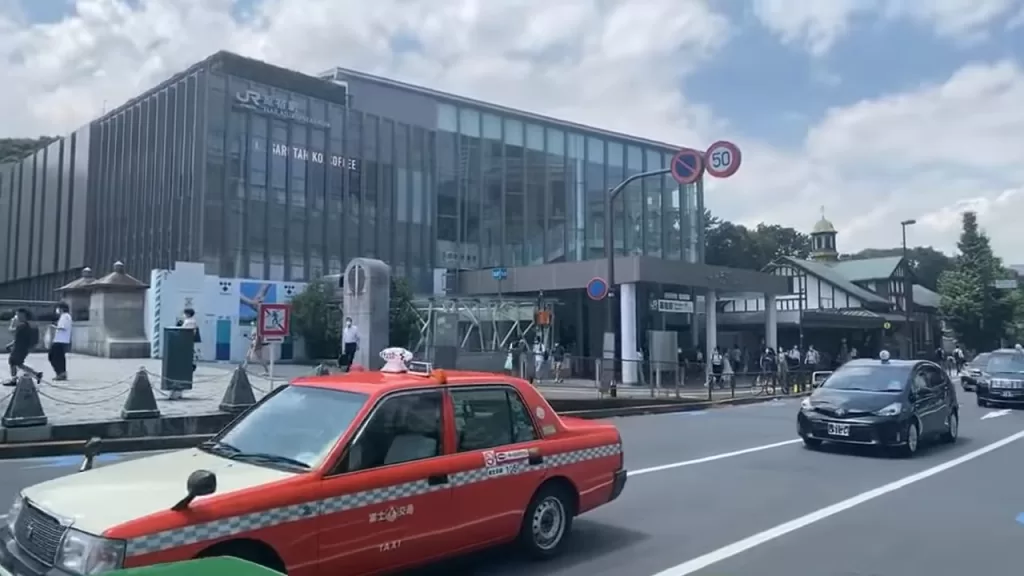The Lasting Impact of Harajuku Station’s Controversial Redesign
Harajuku, Tokyo’s vibrant hub of youth culture and street fashion, underwent a significant transformation with the unveiling of its new train station, replacing the iconic wooden structure built in 1924.
The modern glass and steel building, which opened on March 21, 2020, just before the Tokyo Olympic Games, sparked a heated debate over its design and its impact on the area’s unique character and community.

The History of Harajuku Station
Harajuku Station, located on Tokyo’s busy Yamanote loop line, began operations in 1906. The original Western-style wooden station building, constructed in 1924, was designed to accommodate visitors to the nearby Meiji Jingu shrine, which had been built four years earlier.
For nearly a century, the station served as a gateway to Harajuku, one of Tokyo’s centers for youth culture and street fashions, known for its lively Takeshita shopping street and the upscale Omotesando avenue.
The Controversial New Station Design

The new Harajuku Station, a two-story structure spanning the train tracks, featured exits facing Meiji Jingu shrine and Omotesando avenue. The building’s glass walls allowed ample natural light to flood the concourse, creating a bright and modern atmosphere. The interior, with its tiled floors, provided a clear view of the old station and the tracks.
East Japan Railway Co. (JR East) stated that the station’s redesign was in preparation for the Tokyo Olympic and Paralympic Games in the summer of 2020, as the nearby Yoyogi National Stadium was set to host handball matches.
The new station aimed to offer visitors a more spacious and pleasant experience, as well as secure and safe access to the Olympic and Paralympic venues.

However, the modern design faced criticism from those who felt it ruined the original look and feel of Harajuku Station. The old wooden building, a landmark of the area for nearly a century, was dismantled following the Tokyo Olympic and Paralympic Games due to its narrow shape and failure to meet fireproof standards.
Preserving the Legacy of the Original Design
In response to the public’s concerns, JR East incorporated elements of the original station’s design into a new nearby commercial building separate from the new station.
This effort aimed to preserve some of the historical and cultural elements of the old Harajuku Station while still providing a modern and functional transportation hub for the area.
The Impact on Harajuku’s Culture and Community
The opening of the new Harajuku Station also raised concerns about the potential impact on the area’s unique culture and community. Harajuku, renowned for its vibrant street fashion scene, had long been a gathering place for young people to showcase their creative and often eccentric styles.
Some feared that the modernization of the station would lead to the gentrification of the area, pushing out the small, independent shops and boutiques that had been a staple of Harajuku’s culture.
Others worried that the increased foot traffic from the Olympics and the new station would disrupt the delicate balance of the neighborhood.
Harajuku’s Resilience and Adaptability
Despite the initial concerns surrounding the new Harajuku Station, the area has demonstrated its resilience and adaptability in the face of change. The small, independent shops and boutiques that define Harajuku’s culture have found ways to coexist with the larger, more mainstream retailers that have moved into the area.
The vibrant street fashion scene, though perhaps not as prominent as it once was, still thrives, with young people continuing to gather in the area to express their creativity and individuality.
The new Harajuku Station has become an integral part of the neighborhood, serving as a modern and efficient transportation hub for locals and visitors alike.
As Tokyo continues to evolve and grow, Harajuku remains a testament to the strength and adaptability of its community, proving that even in the face of change, the spirit of this unique and beloved neighborhood endures.